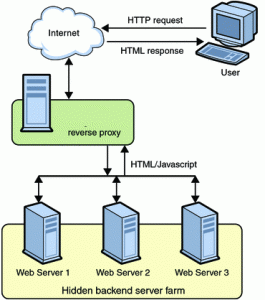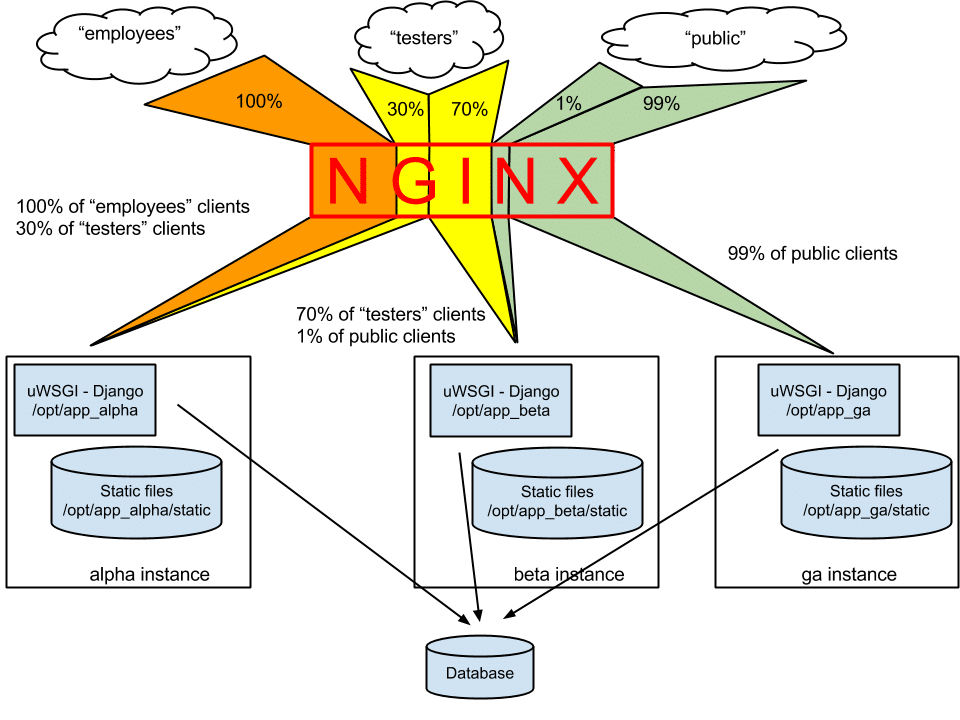Install Nginx Reverse Proxy



A reverse proxy is a server that takes the requests (http/https) & then transfers or distributes them to backend server. Backend server can be an application server like Tomcat, wildfly or Jenkins etc or it can even be another web server like Apache.But why do we even need a reverse proxy in front of app or web server at all, we need it cause,1- It hides point of origin, thus making our backend server more secure & less suseptable to attacks,2- Since reverse proxy is first point of contact for all requests, it can help encrypt/decrypt the request. This takes the load off from backend server,3- It can also be used for caching of content, which again reduces the load from other servers,4- it can also act as a load-balancer.We have already discussed how we can now let’s talk about how we configure a Nginx reverse proxy.Recommended Read. Pre-requisitesWe will need a backend server, it can be any app server or even a webserver. But remember, if you are using a web server that is also on the same server as nginx reverse proxy, make sure that the other web server is not using same tcp port as nginx reverse proxy i.e.
80 & 443.For the purpose of this tutorial, I will using a tomcat server hosted at a different server on IP 192.168.1.110, working at port 8080 (refer to our tutorial here for detailed Apache Tomcat installation). Mustek bearpaw 4800ta pro ii driver windows 7 32bit. As mentioned above, you can opt for different application server or web server.Also Read:InstallationNow let’s discuss briefly, the installation of Nginx on,UbuntuNginx is available with default Ubuntu Repositories.
So simple install it using the following command,$ sudo apt-get update && sudo apt-get install nginxCentOS/RHELWe need to add some repos for installing nginx on CentOS & we have created a detailed for nginx installation on CentOS/RHEL.Now start the services & enable it for boot,# systemctl start nginx# systemctl enable nginx. At this point, we can open the web-browser & enter the server IP of nginx, to see a default webpage & make sure the nginx is working with no issues.ConfigurationNow that nginx is installed & working we will move ahead with the Nginx reverse proxy configuration part. But first we will remove the default configuration for the nginx, it can be done with the following command,# rm /etc/nginx/conf.d/default.confAlternatively, we can also remove the content inside the above mentioned file & make the configuration for Nginx reverse proxy there, but I prefer to use separate file for each site configured.
So let’s create a new conf file for our nginx reverse proxy,# vi /etc/nginx/conf.d/test-proxy.conf& make the following entries to the file,server listen 80;listen :::80;servername test-reverse-proxy.com;location / proxypass. Now save file & exit.
How To Install Nginx As A Reverse Proxy For Apache On Ubuntu 16.04
Here in the configuration, we are telling the about the servername & than under ‘location’ section, we are providing the backend server i.e. Our Apache tomcat server. Now to implement the changes made, we will restart the nginx service but before that we must check if the configuration made are correct or not,# ngnix -tor we can also provide the complete path for configuration file,# nginx -t -c /etc/nginx/conf.d/test-proxy.confOnce the check returns with zero errors, we can restart the nginx service,# systemctl restart nginxNote:- Also make sure that your backend server is working properly before moving onto next step.TestingNow the next & final step is to check if the nginx reverse proxy is working fine or not.
Install Nginx Reverse Proxy Free
So open a web browser & enter the nginx server address/URL. Now when the page finishes loading, we should be seeing the apache tomcat page & not the default nginx page,which we saw earlier.That’s it, our nginx reverse proxy is now ready & working fine. We now end this tutorial, please feel free to send any questions or queries you have regarding this tutorial.